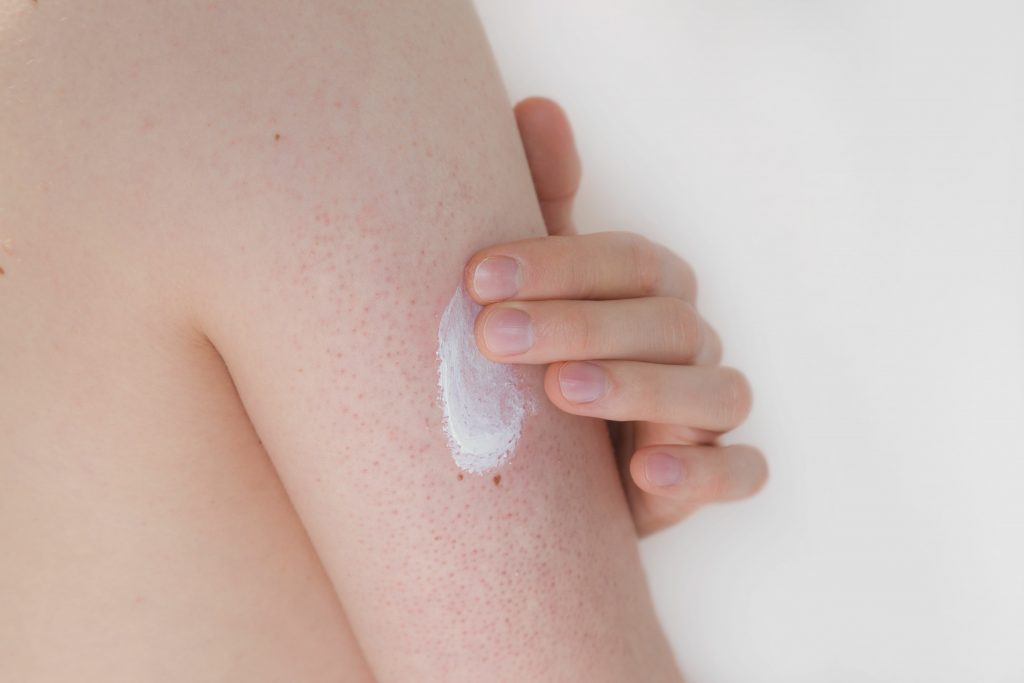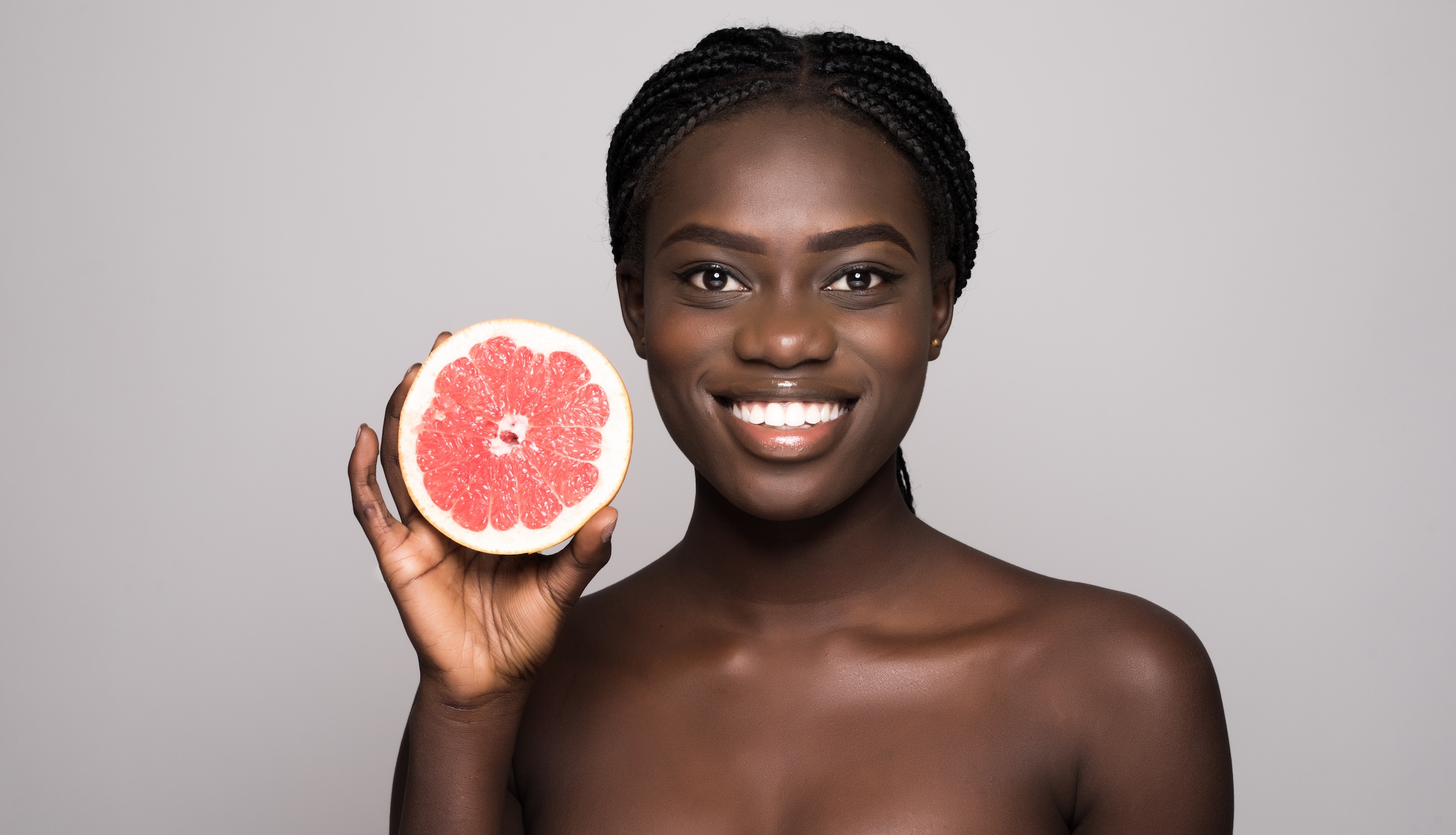It’s time to get your head around Alpha and beta Hydroxy acids, AHAs and BHA.
Having a basic understanding of ingredients will enable you to make better choices for your skin type, and hopefully will put you on the path to better skin.
What acids are we talking about?
Alpha Hydroxy acids are as follows:
- Glycolic Acid
- Lactic acid
- Fruit Acids such as:
- Mandelic acid: almonds
- Citric acid: lemons, limes, oranges, grapefruits etc
- Tartaric acid: grapes, apricots, apples, bananas, tamarinds
- Malic acid: apples, pears, grapes, watermelons, cherries, carrots and brocolli
Beta Hydroxy acid:
- Salicylic acid
What is the difference between AHAs and BHA ?
Both AHAs and BHA are best described as chemical exfoliants. They both remove dead skin cells. AHAs are water soluble and act mostly on the surface of the skin. AHAs help to exfoliate the outer layer of the skin.The skin appears brighter with the dead skin cells gone, but also they can help to stimulate a little collagen.
BHAs can penetrate more deeply into the skin, getting into clogged pores and even binding to sebum. It clears the dead skin cells along with the oil blocking the pore thereby being ideal for acne patients.
Glycolic Acid: the most talked about AHA?
A natural product that is derived from sugar cane. Here is a list of some the the positive effects it has on on your skin:
- Evens out skin tone.
- Reduces the appearance of fine lines and wrinkles.
- Removes dead skin cells, and speeds up cell turnover making skin appear more luminous.
- Can be used to help treat acne by keeping pores free from blockages.
- Helps to minimise pore size.
- It can be used to help fade hyper-pigmentation or dark spots.
Glycolic acid is the most powerful AHA, and is widely found in skincare. It helps to exfoliate dead skin cells and even stimulate collagen production. It is a more potent exfoliant than lactic or fruit acids. It penetrates more deeply than the other AHAs due to the smaller size of the molecule. It can help even out skin tone and make the skin appear more luminous by shedding those old skin cells.
Where to find it?
Glycolic acid can be found in:
- cleansers
- masks
- peels
- serums
- moisturisers
Tips for use?
- An acid cleanser is a great second cleanse when you are doing your double cleanse routine.
- With all active ingredients, I would recommend a gradual introduction and alternating use when using other potent ingredients such as retinol.
- Consult your doctor before adding glycolic acid to your routine especially if you are on prescription strength retinoids.
Always combine any acid use with a broad spectrum SPF 30 or higher. - Glycolic acid can cause a tingling sensation on application which should not be a cause for concern, however burning is a sign that you are using too potent a product.
- Glycolic acid may cause irritation however, and may not be the best option for people with sensitive skin or rosacea.
- Darker skin tones might also run the risk of inducing pigmentation when used at too high a strength.
- It can be good to help fight acne as an alternative in patients who find salicylic acids too drying.
- It can also be used by new mothers, but keep baby away from direct contact!
- Glycolic acid can be found in wash off cleaners or leave on overnight products.
- A wash off cleanser might be a better option for those with sensitive skin.
- It is best to use leave on products at nighttime only, minimising the risk of sun damage.
- Look out for products that contain 5% -10% glycolic acid at the highest for at home use.
- Leave your glycolic at home if you are going on a sun holiday.
Lets take a closer look at specific AHAs.
Lactic Acid.
This is also a gentle acid and good for sensitive skin types looking to introduce some active skincare into their regime. It helps draw moisture to the skin, making it a good option for drier skin types.
The Lactic acid molecule is larger and therefore doesn’t penetrate as deeply as the glycolic acid molecule. Thats what makes it more appropriate for more sensitive skin types. Much like glycolic acid it is used to slough off dead skin cells and reveal more glowy skin. In that way is helps reduce the appearance of fine lines and wrinkles. Like glycolic acid it can even help with acne if you find salicylic acid is too drying for your skin type.
How to use?
Again, like all active ingredients, it should be introduced gradually into you regime to minimise risk of sensitivity. Avoid combining active ingredients without professional advice. Of course, SPF with again be essential!
It is also safe to use for pregnant women, which is a bonus.
Lactic acid is particularly good for a condition known as keratosis pilaris, those little bumps on your thighs or the backs of your arms.
You will find it in cleansers, serums, moisturisers and masks.
Fruit Acids.
These are the most gentle acids. You will often find them combined with other AHAs to increase their effectiveness.

Lets take a closer look at BHAs.
Salicylic Acid.
This one is for you if you suffer from acne, breakouts, congested or oily skin. As mentioned above, it helps clear out the pores, and exfoliate dead skin. It binds to the sebum and removes the oil that clogs the pore. It won’t irritate your skin as it is anti-inflammatory (reduces redness and swelling) and is great for removing blackheads and whiteheads. It can be used up to twice a day for acne sufferers. It can be within a cleanser or as a separate treatment after cleansing (good for tackling smaller areas).
How to use at home?
Mild to moderate acne effecting the whole face, or shiny oily skin
Oily skin or acne effecting the whole face will benefit from an all over cleanser. If the salicylic acid is within in a cleanser, wet the affected area, gently rub into the skin for 10-20 seconds without scrubbing then rinse and pat dry. If you find this too drying you can use the products less often than once or twice a day, to every other day. Reduce use as acne clears up to minimise dryness.
Tip: Keep an eye out for a 2% salicylic cleanser.
Isolated areas: Blackheads on nose? Blemishes around chin?
It should be limited to use in the affected area: for the t-tone for example if treating blackheads, so other parts of the face aren’t unnecessarily dried out. Apply a liquid product after cleansing and drying the skin at night. No need to extend beyond effected areas.
Retinols also help with both of the above problems. See previous article here.
General exfoliation?
I wouldn’t recommend this an a first choice exfoliator unless you are suffering from one of the issues mention above. Something less drying would be preferred from the AHA section!
Warnings: Salicylic acid is not suitable to apply over large parts of your body as it may cause toxicity. Not suitable for use in pregnant women or children. It can be used by breastfeeding women as long as the baby is not in contact with in the areas of skin it is applied to.
Professional Use
Salicylic acid can also be used for professional peels to address issues such as acne, acne scarring and pigmentation in much stronger concentrations. Don’t try this at home!
I hope you have found the above information helpful. Of course, one ingredient is not the key to a skincare regime, but having a basic understanding of ingredients will enable you to make better choices for your skin type, and hopefully will put you on the path to better skin. You may notice, I don’t mention particular brands in my blog or products for my readers. I don’t wish them to buy something based on my advice that may not work because I have never actually seen their skin, thereby bringing on disappointment, in particular when good skincare is often expensive! Please feel free to chat to me anytime as to what I might recommend for your skin. I would be delighted to help.
Dr Barry


